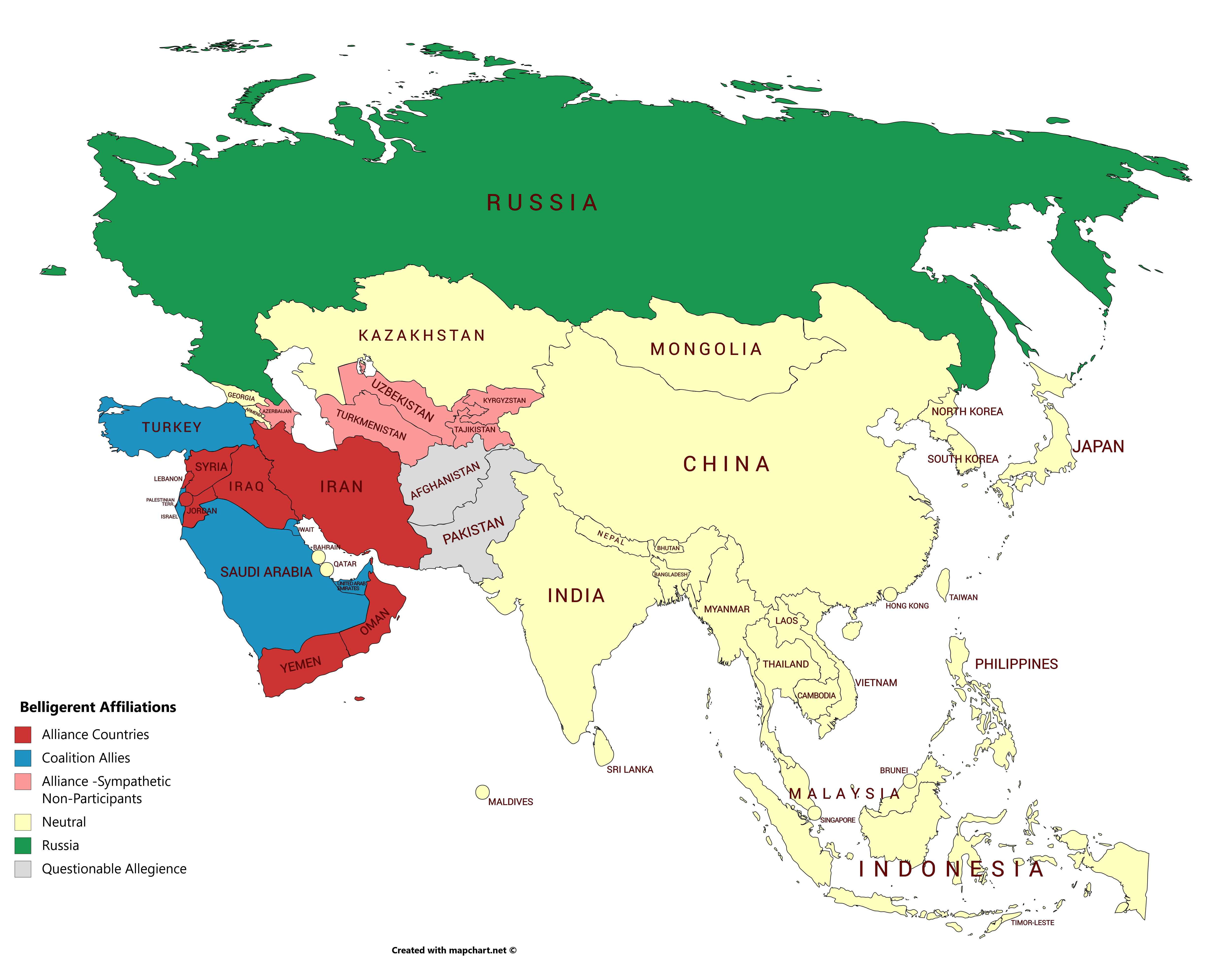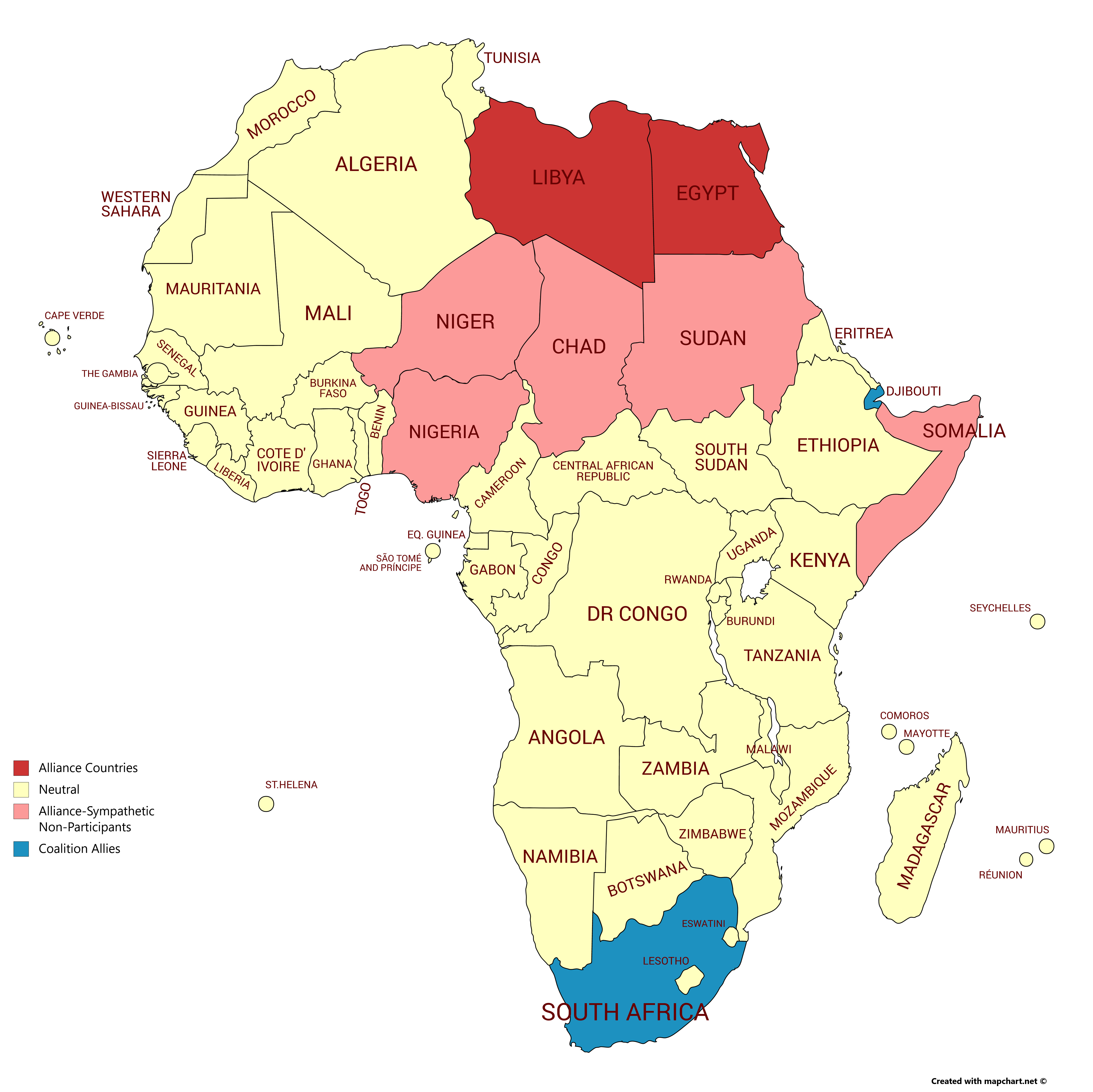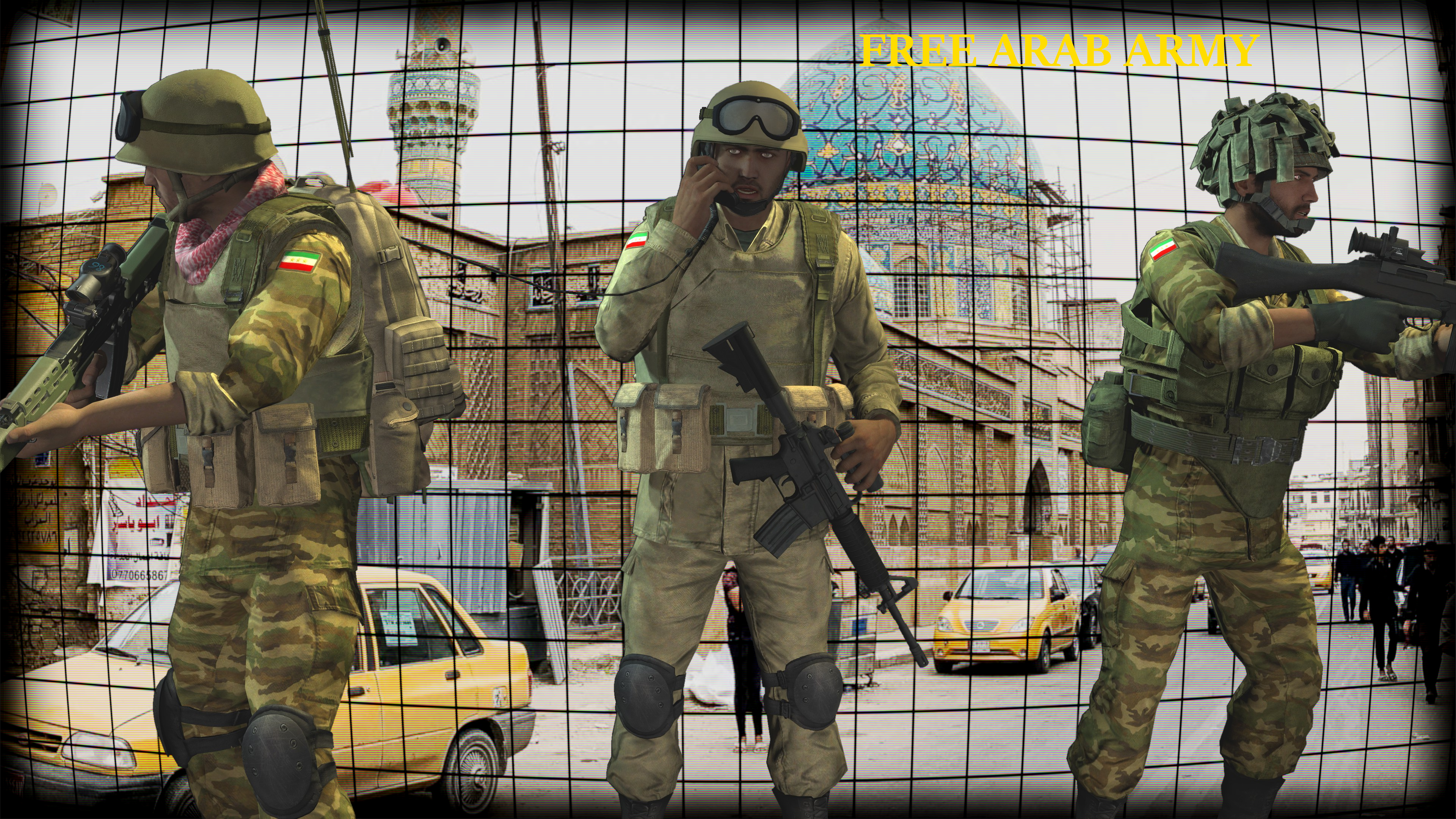Dudu Fadende
Proton
- Joined
- Jan 17, 2019
- Messages
- 147
- Nebulae
- 347
Since I'm constantly dicking around making things that don't really fit in anywhere or am always coming up with concepts for stories and settings, I figured I'd just go ahead and make myself a thread where I can put up all this stuff to share with the world. Who knows, maybe some interested soul might want to help out with any of the mountains of projects I start and never finish because my mind works at 1000 mph.
So let's get started then.


Some time in the near future a number of countries including Iraq, Iran, Syria, Jordan, Lebanon, Oman, Yemen, Egypt and Libya form an alliance to kick out all foreign invaders and secure sovereignty for the region (though in reality the project is bankrolled by the Iranians primarily so they can take out their long-time rivals the Saudis and control the middle east for themselves). For some time there's rumblings of the Arab countries coming together to form some sort of anti-western coalition but no one takes them seriously until suddenly embassies begin closing around the world and all contact with these countries ceases. A massive mobilization campaign is undertaken as all these countries begin to pool their resources together, though before anything can be done the declaration of the Alliance to Restore Autonomy of the Levant sparks massive anti-foreign riots which cause all but the most important NATO Coalition installations to be evacuated. The Alliance military uses the riots as cover to begin their attack and easily overwhelm most of the bases still left garrisoned. Coalition forces pull back across the borders to their only allies left in the region: Israel, Saudi Arabia, Kuwait and Turkey. Attacks on Russian installations have also provoked retaliation, though they have been operating independently of Coalition forces in Afghanistan and the surrounding nations such as Uzbekistan and Tajikistan, and are considered a potential rogue element. Coalition forces have managed to maintain control of Afghanistan due to the mountainous terrain of the country making it near-impossible to mount a conventional invasion, which in turn has led to the Alliance bankrolling a number of warlords in the country in order to destabilize Coalition and Russian forces. A number of majority-muslim countries outside of the middle east such have expressed sympathies with the Alliance, though for completely misguided reasons of faith, as the Alliance is a secular organization. Though these countries are sympathetic to their cause, they are not direct participants in the conflict and provide no material or monetary aid to the Alliance. This being said however, radical Islamic attacks have increased exponentially in Central Asia and Africa thanks to money being funneled from Alliance-backed terrorist groups in Afghanistan and Pakistan to groups in Asia and Africa. Great care must be taken as to the handling of these nations in the future, as they could easily be swayed into directly contributing to the Alliance war effort. Despite Pakistan being considered a US ally, their allegiance is called into question due to their history of turning a blind eye to many terrorist groups in the past, and many off-the-books black ops have been conducted by Coalition and Russian troops in the country to gather any information as to whether Pakistan is supporting the Alliance.
With the future of the region looking more uncertain than any other time in history, the world watches and waits with bated breath...

Made up of locals hailing from the Arab countries of the middle east, the majority of militia fighters are ill-equipped and poorly-trained, though they make up for this with large numbers and an indomitable fighting spirit. Most militia groups have no affiliation with each other and have varying and often contrary aims and goals that range from trying to simply ensure peace and stability in their region to drug smuggling and outright terrorism. Some militia groups have thrown in with outside forces such as the NATO Coalition and Russian Ground Forces deployed in their countries to eliminate seedy rogue elements while others consider all foreign militaries to be invaders whether their goals are altruistic or not. It can be hard to pin where the allegiance of most groups lie, though one thing is for certain; militia presence in the countryside has been growing significantly for some time. Many strategic rural areas have fallen under their control, and some forays into urban areas have been made by various militia cells. They are a wild card that could potentially prove decisive in deciding the fate of the region should they ever develop a greater level of cohesion among cells.
So let's get started then.
- Scenario 1: Fictional Massive Middle Eastern War


Some time in the near future a number of countries including Iraq, Iran, Syria, Jordan, Lebanon, Oman, Yemen, Egypt and Libya form an alliance to kick out all foreign invaders and secure sovereignty for the region (though in reality the project is bankrolled by the Iranians primarily so they can take out their long-time rivals the Saudis and control the middle east for themselves). For some time there's rumblings of the Arab countries coming together to form some sort of anti-western coalition but no one takes them seriously until suddenly embassies begin closing around the world and all contact with these countries ceases. A massive mobilization campaign is undertaken as all these countries begin to pool their resources together, though before anything can be done the declaration of the Alliance to Restore Autonomy of the Levant sparks massive anti-foreign riots which cause all but the most important NATO Coalition installations to be evacuated. The Alliance military uses the riots as cover to begin their attack and easily overwhelm most of the bases still left garrisoned. Coalition forces pull back across the borders to their only allies left in the region: Israel, Saudi Arabia, Kuwait and Turkey. Attacks on Russian installations have also provoked retaliation, though they have been operating independently of Coalition forces in Afghanistan and the surrounding nations such as Uzbekistan and Tajikistan, and are considered a potential rogue element. Coalition forces have managed to maintain control of Afghanistan due to the mountainous terrain of the country making it near-impossible to mount a conventional invasion, which in turn has led to the Alliance bankrolling a number of warlords in the country in order to destabilize Coalition and Russian forces. A number of majority-muslim countries outside of the middle east such have expressed sympathies with the Alliance, though for completely misguided reasons of faith, as the Alliance is a secular organization. Though these countries are sympathetic to their cause, they are not direct participants in the conflict and provide no material or monetary aid to the Alliance. This being said however, radical Islamic attacks have increased exponentially in Central Asia and Africa thanks to money being funneled from Alliance-backed terrorist groups in Afghanistan and Pakistan to groups in Asia and Africa. Great care must be taken as to the handling of these nations in the future, as they could easily be swayed into directly contributing to the Alliance war effort. Despite Pakistan being considered a US ally, their allegiance is called into question due to their history of turning a blind eye to many terrorist groups in the past, and many off-the-books black ops have been conducted by Coalition and Russian troops in the country to gather any information as to whether Pakistan is supporting the Alliance.
With the future of the region looking more uncertain than any other time in history, the world watches and waits with bated breath...
- Factions

Made up of locals hailing from the Arab countries of the middle east, the majority of militia fighters are ill-equipped and poorly-trained, though they make up for this with large numbers and an indomitable fighting spirit. Most militia groups have no affiliation with each other and have varying and often contrary aims and goals that range from trying to simply ensure peace and stability in their region to drug smuggling and outright terrorism. Some militia groups have thrown in with outside forces such as the NATO Coalition and Russian Ground Forces deployed in their countries to eliminate seedy rogue elements while others consider all foreign militaries to be invaders whether their goals are altruistic or not. It can be hard to pin where the allegiance of most groups lie, though one thing is for certain; militia presence in the countryside has been growing significantly for some time. Many strategic rural areas have fallen under their control, and some forays into urban areas have been made by various militia cells. They are a wild card that could potentially prove decisive in deciding the fate of the region should they ever develop a greater level of cohesion among cells.
Last edited:









